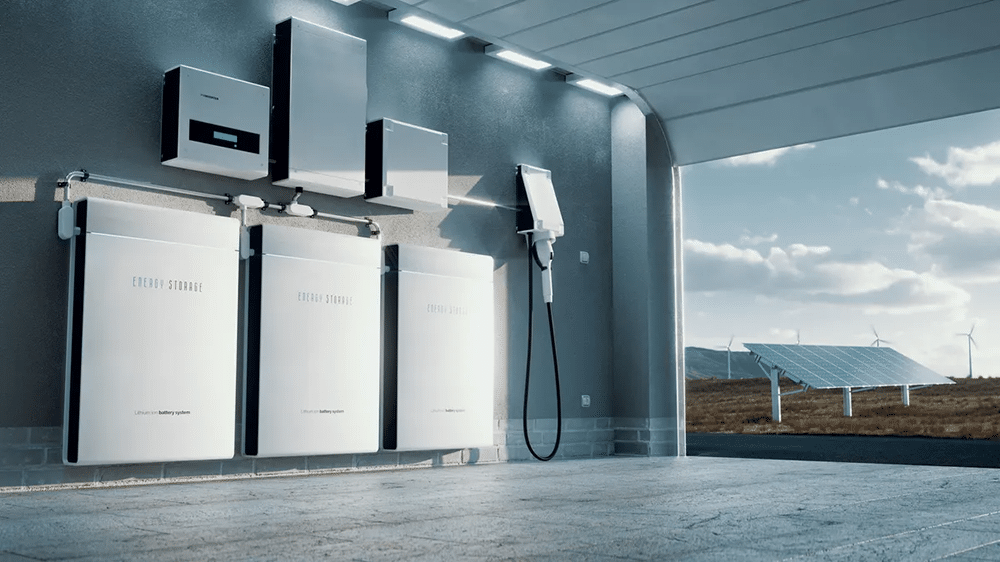Moving Towards the Light: Home Backup Power Systems

We’ve previously highlighted California’s new climate paradigm marked by increasingly extreme weather events. The reliability of a home backup power supply has become more critical than ever. Recent events like Hurricane Hilary, which brought unprecedented tropical storm conditions to California that hadn’t previously happened in recorded history, underscore the vulnerability of our electrical grids. Wildfires ravaging the west, like the ones in Maui, show that power outages aren’t just mere inconveniences; they’re potential emergencies. In this article, we discuss various ways to enhance your home backup power system as a means to ensure continuity amidst disruptions.
You have several ways to ensure your home power keeps flowing during an outage. The conventional way is using a gasoline or diesel generator. While these do the job and are relatively inexpensive, they come with significant drawbacks. They rely on fossil fuels, contributing to environmental pollution and carbon emissions. They produce noise and unpleasant fumes, making them unsuitable for densely populated areas. Maintenance demands are high, involving fuel storage, oil changes, and engine upkeep. They are less reliable during fuel shortages or natural disasters when fuel distribution is disrupted. On the whole, the initial cost, fuel expenses, and potential safety hazards, such as fire and carbon monoxide poisoning, make gas generators less appealing compared to cleaner and more efficient alternatives like ones that involve battery storage.
Portable battery units (such as those from companies like EcoFlow and Jackery) that were once mainly targeted at the camping market are finding a larger user base. They start at just a few hundred dollars, go as high as a few thousand, and offer a compelling solution for home backup power needs. These compact devices store electricity from renewable sources, such as solar panels, or the grid during off-peak hours, making them environmentally friendly and cost-effective. They operate silently and emit no harmful emissions, suitable for both urban and rural environments. Their maintenance is minimal compared to traditional generators, eliminating the need for fuel storage and regular maintenance. Further, these batteries provide a fairly seamless transition during power outages, usually with just the flip of a switch, ensuring a steady supply of electricity for essential appliances. While they may have limitations in terms of capacity and runtime for larger homes, advances in battery technology are steadily addressing these concerns, making portable battery units an increasingly attractive and sustainable choice for backup power.
EV owners can also use a bidirectional vehicle charging system. This technology allows electric vehicles to not only draw power from the grid but also to feed excess energy back into it. (This is called V2G, or Vehicle to Grid.) During normal operations, the vehicle battery can store electricity during off-peak hours, reducing energy costs. However, in times of power outages, the same battery can be utilized to supply electricity to the home, serving as an efficient backup power source. (V2H, or Vehicle to Home.) This dynamic two-way flow of energy not only offers homeowners greater energy independence but also contributes to grid stability by balancing supply and demand. As electric vehicle adoption grows, bidirectional charging systems could revolutionize how homes manage their energy needs while simultaneously benefiting the overall energy ecosystem.
SMA’s exclusive inverter switches can supply AC power directly to your home when receiving DC input voltage from sources including your solar panels. So a grid failure during daylight hours can be relieved by your solar panels even without batteries.
Finally, high-end permanent battery backup systems (such as a Tesla Powerwall or systems by Ultium or Enphase) represent the most automated, cutting-edge solution for robust home power backup. These advanced energy storage systems overwhelmingly use lithium-ion technology, offering capacity to support a wide range of household appliances during outages. Equipped with sophisticated energy management software, they can optimize charging and discharging cycles based on consumption patterns, extending battery life. The software can also run at peak cost times for grid electricity, saving you money. These systems integrate with solar panels, efficiently storing excess energy for nighttime or emergency use. Their automatic switchover capability can ensure a swift transition to backup power without interruption. While the initial investment is often over $10,000, these permanent home battery systems promise reliability, longevity, and energy independence, making them a compelling choice for homeowners seeking resilient and sustainable backup power solutions.